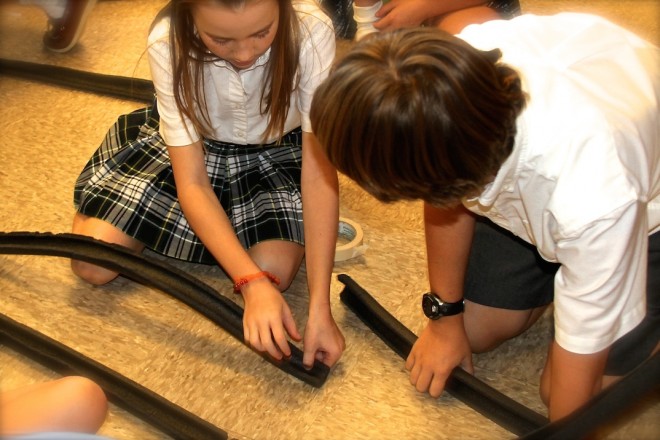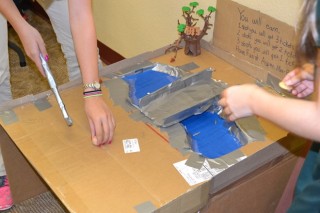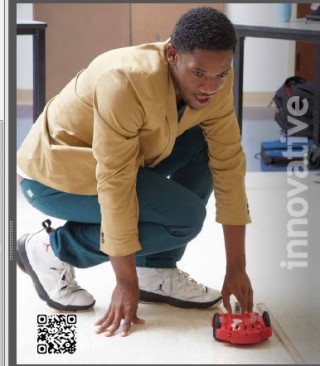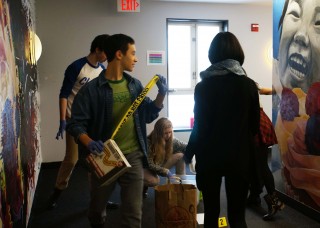Marbles rolled across the floor as students scrambled to secure connections and fine-tune turns.
For the past few days, students in Ellen Neill’s fifth-grade science class have been studying physics concepts, and how the laws of motion propel a marble along a roller coaster track.
“It’s really neat to see the marble gain speed and complete a loop, but then slow down when it’s just moving straight along a track,” Emily Lichty explained. “I never knew it this all had to do with force, acceleration, and velocity.”
After understanding the differences between net force, gravity, and friction, as well as how an object gains and loses speed, students were given the task of designing roller coaster tracks that successfully hold a rolling marble from start to finish.
For the first challenge, the marbles had to clear three hills and single loop-the-loop without falling off. The second challenge asked students to design a track that changed levels at least five times, made a U-turn, and came to rest at a tissue barricade without tearing the paper.
Neill said the level changes could include ramps, drops, or valleys. Students could also use tape to secure lengths of Styrofoam piping, and attach their tracks to any objects in the classroom, including tables, paper towel dispensers, chairs, and filing cabinets.
“They needed to figure out how to move the marble up a hill and make sharp turns without pushing it along,” Neill said. “It’s been great seeing them use their creative-thinking skills and scientific knowledge to excel at the different challenges.”
For the final challenge, students had to build a roller coaster with one large and one small hill, an S-turn or loop-the-loop, and track space for the marble to hit and topple over a paper cup.
“The hardest part was trying to make the marble stop without ripping the paper,” Luke Mooty said. “After we added more track we were able to slow down the marble’s acceleration. I knew we could figure it out!”



